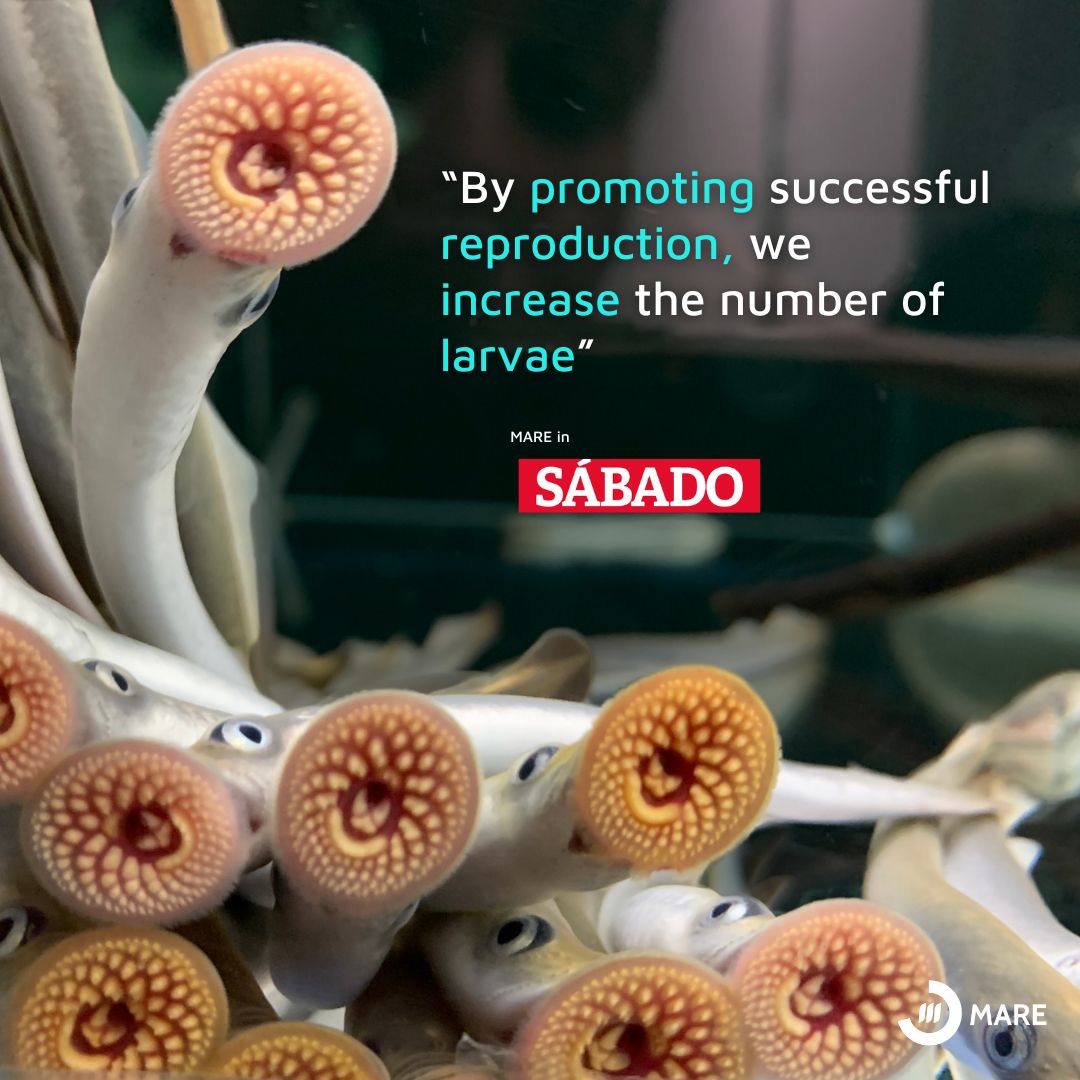Pedro Raposo de Almeida in an interview with Sábado magazine
With a fossil record dating back more than 280 million years, the lamprey is one of the oldest and most evolutionarily resilient species in the animal kingdom. However, despite this longevity, the species is currently classified as “critically endangered” on the Red List of the International Union for Conservation of Nature (IUCN). The response to this biological crisis is being coordinated by Pedro Raposo de Almeida, researcher and director of MARE.
Since the beginning of 2024, Pedro Raposo de Almeida has been scientifically leading a conservation project on the Mondego River, as part of the European Dalia program, promoted by the Intermunicipal Community of the Coimbra Region. The main measure implemented consists of translocating adult lamprey - caught in the estuary and the Lower Mondego - to upper stretches of the river, upstream of Coimbra, with the aim of boosting the species' reproductive success.
“One of the most important actions (of the project) is the translocation [transfer of the species from one area to another] of adult lampreys from the area where they are caught, in the Baixo Mondego and the estuary, to the upper stretch, upstream of Coimbra, in order to increase the reproductive success of the species,” Pedro Raposo de Almeida told Sábado magazine. “By promoting successful reproduction, we increase the number of larvae.”
Between March 16 and April 4, only 30 specimens were caught, a significantly lower number than expected. “In years of abundance, dozens of animals are caught each night. During this period, there were nights when not a single one was caught,” laments the researcher.
According to Pedro Raposo de Almeida, the sea lamprey has lost around 80% of its available habitat on the Iberian Peninsula since the middle of the 20th century, essentially due to the construction of hydraulic infrastructures. At the same time, high fishing pressure - with mortality rates of over 60% - is an additional threat factor. “No other species could withstand what they are doing to the lamprey,” he stresses.
The current scarcity has led to significant increases in the commercial value of the species, with prices exceeding 100 euros per unit at the first point of sale, which reinforces the urgent need for sustainable management and conservation.
In addition to translocation, the project includes mapping larval sanctuaries in the summer, with the aim of protecting critical areas in the species' life cycle. Awareness-raising campaigns aimed at the riverside community are also planned, with the aim of reducing informal catching practices that further exacerbate the pressure on the breeding population.
Pedro Raposo de Almeida considers it essential that these measures be replicated in other river systems, and that lamprey conservation requires an integrated, multi-regional and sustained approach over time. Accumulated scientific knowledge and collaboration with local communities are key elements in reversing the current population decline.
Photo by Filipa Silva
Written by Patrícia Carvalho
